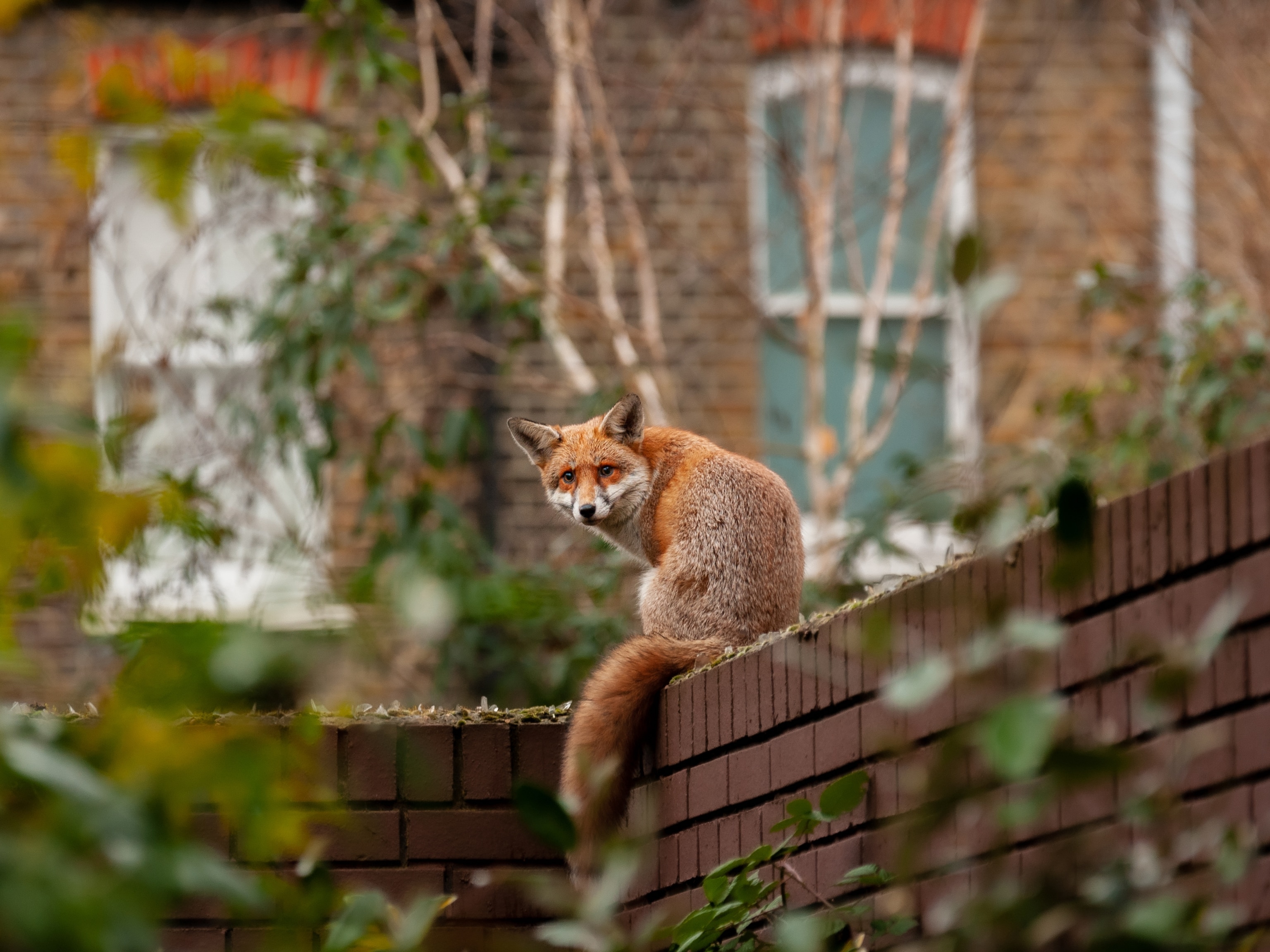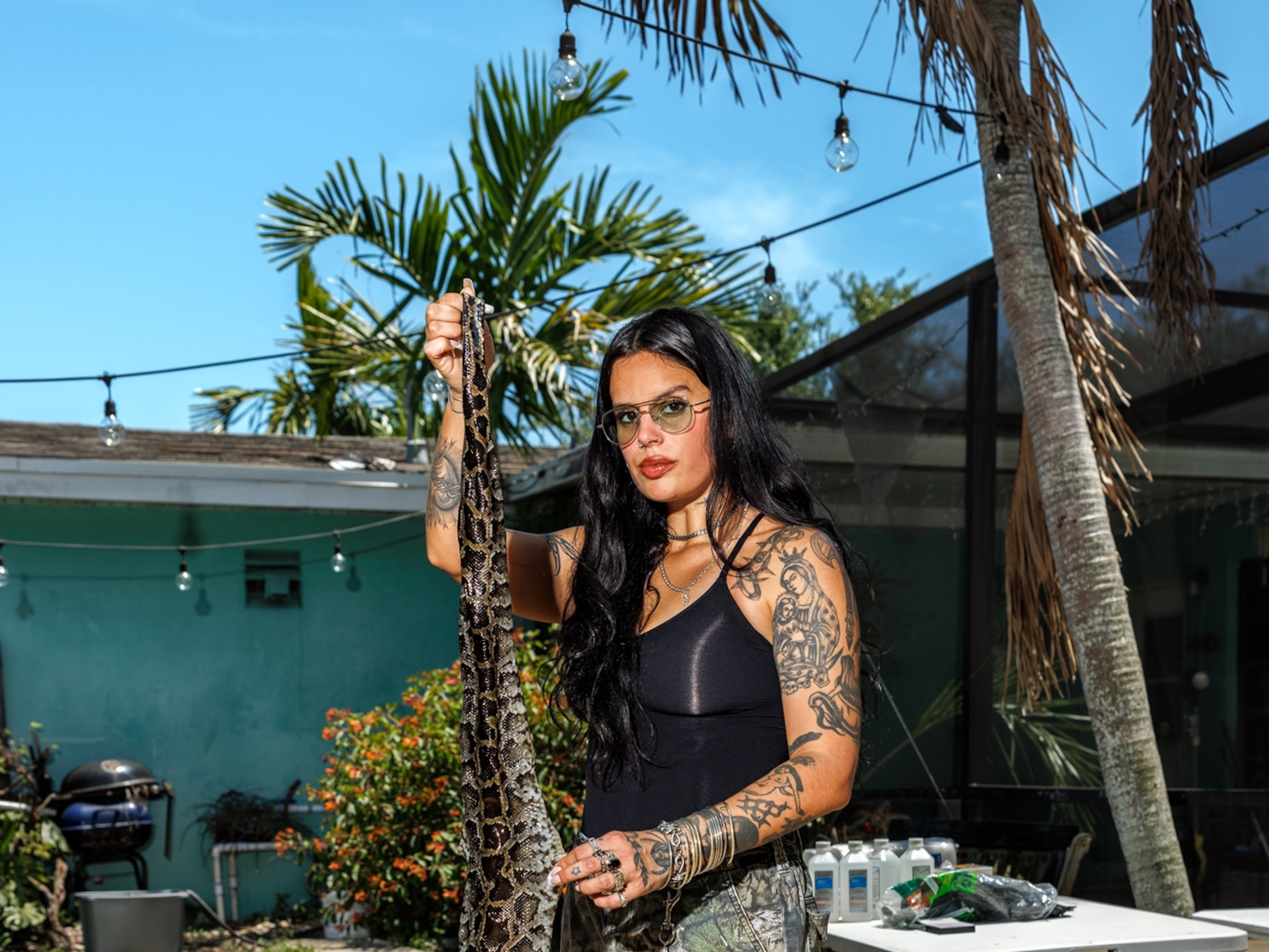Watch: 6-Foot Snake and Her Babies Rescued From Backyard
The 16 eggs will be raised in captivity and then released into the Australian bush, according to the reptile-relocation group.
Backyard wildlife can be charming—except, maybe, when it's a 6.5-foot python snoozing in your garden mulch.
Such was the case in Dicky Beach, Australia, where a homeowner recently discovered a nonvenomous carpet python cradling a clutch of eggs beneath a ledge. (Watch a snake swallow another snake whole.)
Snakes love tight crevices that are difficult for other predators to get into but still have access to sunlight, says Tara Archer, a reptile keeper at the Columbus Zoo and Aquarium in Ohio.
“The soil underneath is probably nice and soft, which makes it easy to move in and out,” says Archer. “And gardens are great places because there are always little critters to eat.”
But most people aren’t keen on the idea of hosting a carpet python nursery on their property—which is why the homeowner called a professional wildlife-removal company, Sunshine Coast Snake Catchers, to rescue the reptile family.
This Side Up
Handling any wild animal can be risky, of course, but the stakes go up when that animal is a mother with babies.
For one, when a mother python is disturbed, she will sometimes abandon her eggs. That's why the handler in the video, Max Jackson, says snake handlers box the eggs up and incubate them artificially. (Also see "A Colossal Snake Dies Under Mysterious Circumstances.")
Snake eggs have to be handled carefully: Unlike hard-shelled bird eggs, snake shells are soft. Also unlike bird eggs, which require their mothers to turn the eggs from time to time, snake eggs need to remain roughly in the orientation the mother lays them.
“The embryos in snake eggs, and reptiles in general, are adhered to the membrane on the inside of the eggshell,” says Scott Boback, a herpetologist at Dickinson College in Pennsylvania.
Because of this, people who raise snakes have long thought that turning the eggs can dislodge the embryos and cause them to “drown” inside the egg—sort of like a human baby that is suddenly cut off from its umbilical cord.
Whether or not the embryos truly drown, Boback can’t say, but a 2002 study showed that grass snakes were more likely to die after hatching when their eggs were turned during incubation.
That's why Jackson took care not to jostle the clutch.
“[Jackson] was working well with the landowner, talking with them very professionally, explaining what was going on,” Boback says. “That can be difficult to do when people are just like, ‘Here’s a snake, get it out of here!’”
Mother Knows Best
Of course, snake mothers have their own strategies for making sure their babies hatch.
Moms secrete a protein while laying eggs that helps her young stick together. Not only does this keep the eggs from rolling onto their sides, but it also reduces surface area, which helps prevent the eggs from drying out. (Read why we were totally wrong about how pythons kill.)
“Snakes are excellent parents, and pythons, like the one in that video, actually coil around their eggs to keep the warm and safe while they’re incubating,” says Columbus Zoo's Archer.
But it’s not just a matter of cuddling for warmth.
“If it’s cold outside or there’s not a lot of sun, pythons will actually do this thing called shivering thermogenesis," adds Boback.





